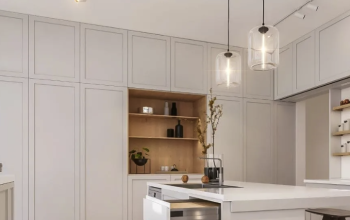When one thinks of Renaissance art and architecture, images of ornate frescoes and grandiose cathedrals come to mind. However, one of the most stunning features of this era’s architecture was its ceilings. Renaissance ceilings were often blank canvases for artists to adorn with intricate designs, frescoes, and paintings. These ceiling masterpieces were the crowning glory of the grand rooms they adorned and transformed the spaces into works of art themselves. This article will take you on a tour of the most beautiful and awe-inspiring Renaissance ceilings, exploring their history, styles, and symbolism.
The History of Renaissance Ceilings
During the Renaissance, a newfound appreciation for Classical art and architecture swept through Europe. As a result, artists and architects turned to the ancient Greeks and Romans for inspiration, and classical motifs and designs became popular. This revival of classical art also brought about a renewed interest in perspective and proportion, leading to a greater emphasis on the use of the ceiling as a canvas for grand frescoes and artworks.
Renaissance ceilings were notably different from those of the Gothic era, which featured heavy vaults and ribbed arches. Instead, the ceilings of the Renaissance era were lighter, featuring wider spans of flat surfaces, allowing for more elaborate paintings and frescoes. Spaces like grand halls, churches, and palaces provided ample opportunities for artists to display their talents on the ceilings of these grand architectural structures.
Styles of Renaissance Ceilings
The Renaissance saw a variety of ceiling styles, each extremely ornate and reflective of the era’s interest in geometry, symmetry, and harmony. The most popular style was the coffered ceiling, which featured geometric shapes in symmetrical patterns. Coffered ceilings could be painted or left blank, and the use of gilding and intricate moldings would make the coffered designs pop.
Another style of Renaissance ceiling was the painted ceiling, also known as a fresco ceiling. Painted ceilings featured scenes from mythological stories, religious tales, and pastoral life, all painstakingly painted on the ceiling’s surface. Famous artists like Michelangelo and Raphael were masters of this style, creating frescoes that still remain some of the most recognizable artworks of the era.
Symbolism in Renaissance Ceilings
Renaissance ceilings were not just for decoration; they also had symbolic importance. For example, a painted ceiling could be used to depict a family’s coat of arms, or religious imagery could denote the importance of the building. Often, the ceilings would be divided into different sections, each representing a different theme or message. The ceiling of the Sistine Chapel in the Vatican is a prime example of this, with its intricate frescoes depicting stories from the Bible and the family history of the Pope.
Famous Renaissance Ceilings
There are many famous Renaissance ceilings to discover. One of the most famous is the Sistine Chapel ceiling, painted by Michelangelo between 1508 and 1512. The forty panels depict scenes from the Book of Genesis, with the centerpiece being the iconic Creation of Adam.
Another stunning example of a Renaissance ceiling is the Hall of Mirrors at the Palace of Versailles in France. This ceiling is adorned with frescoes depicting allegorical scenes, including the legend of Apollo and the story of the Four Elements.
Finally, the Doge’s Palace in Venice, Italy, boasts one of the most beautiful Renaissance ceilings in Europe. This ceiling features richly painted beams and intricate details of allegorical figures, all bathed in a warm golden light.
Renaissance ceilings were a testament to the era’s artistic and architectural achievements. They were not only beautiful but also served an important symbolic purpose, tying the building’s architecture and design to its purpose and history. For those fortunate enough to visit buildings adorned with Renaissance ceilings, the experience is nothing short of breathtaking. These ceilings remain a testament to the hands and eyes of the masters who created them and serve as a reminder of the beauty and brilliance of the Renaissance era.




